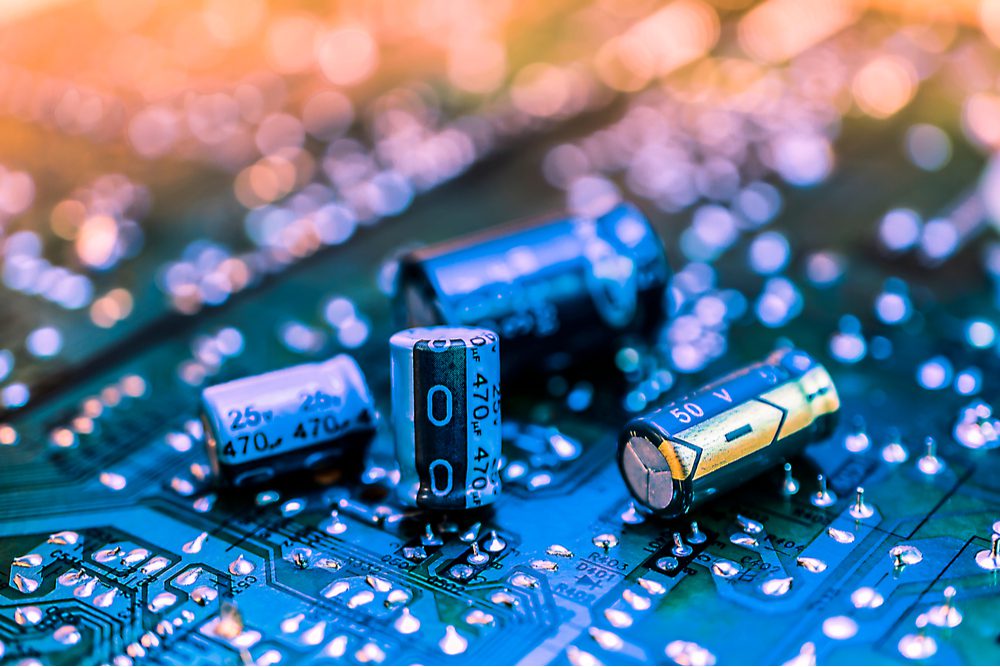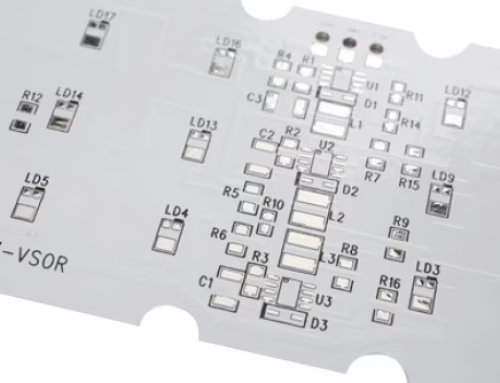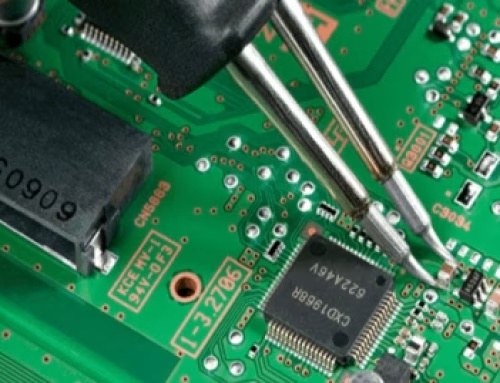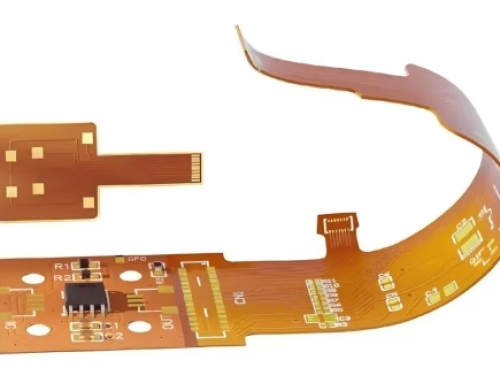A Complete Guide to Electronic Devices and Circuits
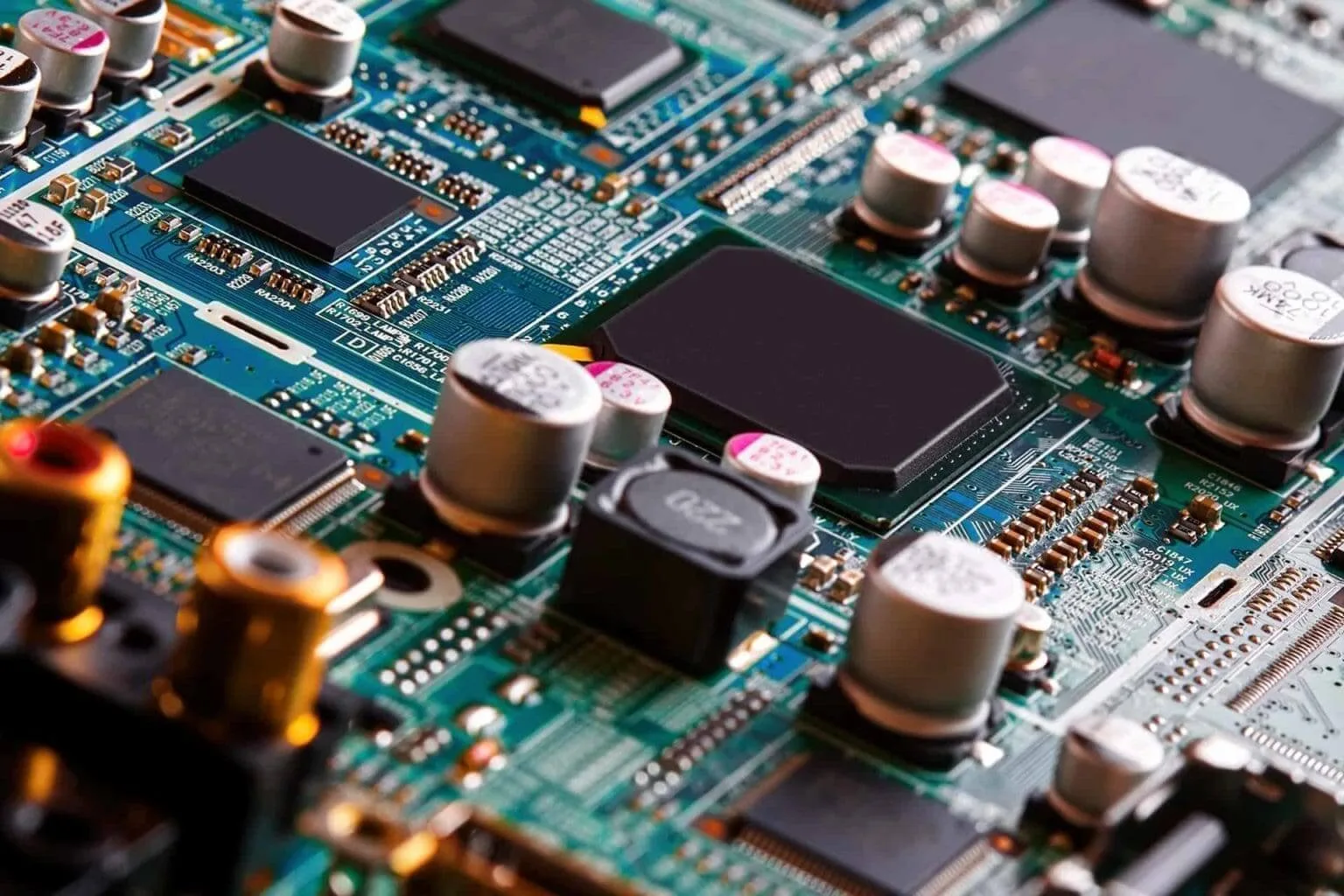
Table of Contents
- 1. Таҷҳизот ва схемаҳои электронӣ: онҳо чистанд?
- 2. Таҷҳизоти электронӣ дар технологияи муосир чӣ нақш доранд?
- 3. Кадом намуди таҷҳизоти электронӣ мавҷуд аст?
- 4. Схемањои электронї кадомњоянд
- 5. Намудҳои схемаҳои электронӣ
- 6. Тарзи тарҳрезии схемаҳои электронӣ
- 7. Асбобхои санчиш ва ченкунй барои асбобхои электронй
- 8. Дастгоҳҳо ва схемаҳои электронӣ
- 9. хулоса
1. Electronic devices and circuits: What are they?
You should first learn about electronics. The branch of physics that studies electrons and their flow and control in different situations is called electronics. Electronic devices control electrical current flow for the purpose of information processing and system controls. These devices are able to perform complex functions like communication, computing, and automation by using semiconductor components such as integrated circuits and transistors. Electronic gadgets are built on electronic circuits.
Electronic components such as resistors and capacitors make up electronic circuits. They can also include diodes, transistors, and inductors. These electronic components are connected by wires or printed circuit boards to allow electric current to flow. Simple LED circuits and power supply circuits, as well as amplifier circuits, are examples of electronic circuits.
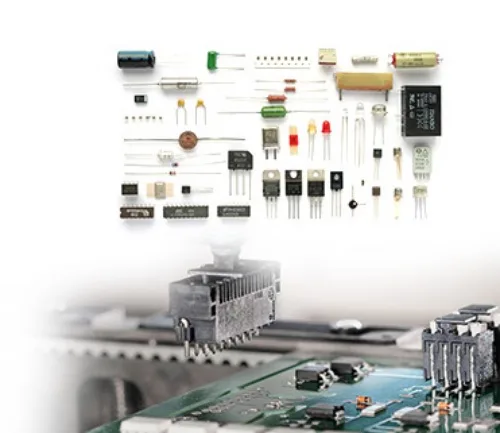
2. What role do electronic devices play in modern technology today?
Modern technology is mostly shaped by electronic devices, which also transform a number of businesses. Our daily lives are now surrounded by electronic gadgets. These devices, from cell phones to high-tech appliances, make life easier, more accessible, and more comfortable. Modern technology heavily relies on electronic equipment. If you’ve ever pondered how electronic devices operate, you’re not alone. Even if you use electronic circuits and devices frequently, most people don’t know how they work. Electronic devices consist of electronic circuits containing electronic components that process information and perform different applications. Electronic devices are used in many different fields.
- Smart devices and consumer electronics
- Intelligent Machines and Computer Systems
- Automation and Industrial Electronics
- Medical Field and Healthcare
- Healthcare and the Medical Field
Electronic Circuits and Devices’ Function in Contemporary Technology
3. Which kinds of electronic devices are available?
3.1 Passive Components
Passive electronic components like diodes and inductors make up electronic gadgets. An electrical component that uses energy and functions as a load is called a resistor. The resistor also acts as a load. A capacitor stores the energy as electric charge. An inductor: A device that stores energy as a magnetic field is called an inductor.
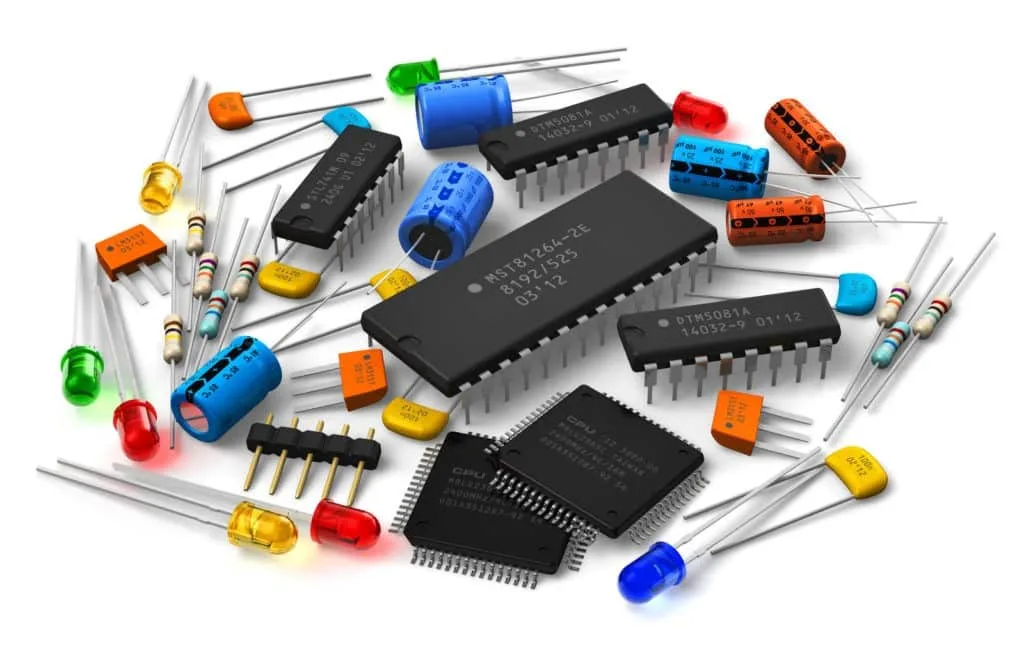
3.2 Active Components
A transistor is an active semiconductor electronic component. It can be used to switch electronic devices or amplify signals and power. These are used in many electronic devices and appliances, including computers, mobile phones, and memory chips etc. Transistors are essential parts of integrated circuits (ICs), which are tiny chips with passive parts like resistors and capacitance imprinted on them.
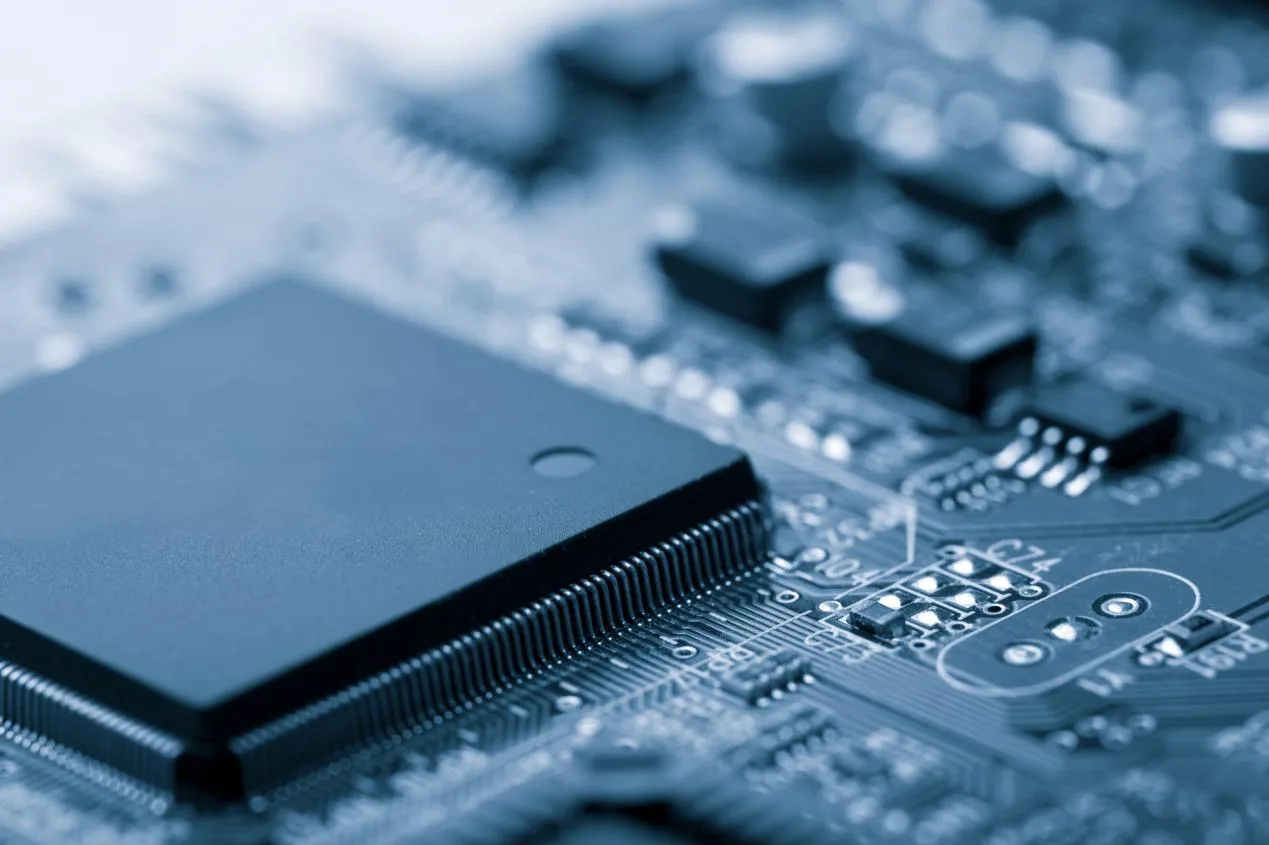
Integrated Circuit (IC)
3.3 Semiconductor Devices
Diodes block current in one direction while allowing it to flow in another. The semiconductor material is P-type or N-type. Zener diodes, light-emitting, and other types of diodes can be used as special diodes. The diode also protects the circuits against overvoltage and reverse polarity.
Other semiconductor devices utilized in electronic circuits and devices are metal oxide semiconductor field-effect transistors (MOSFETs) and bipolar junction transistors (BJTs). BJTs and MOSFETs both have current-controlled devices.
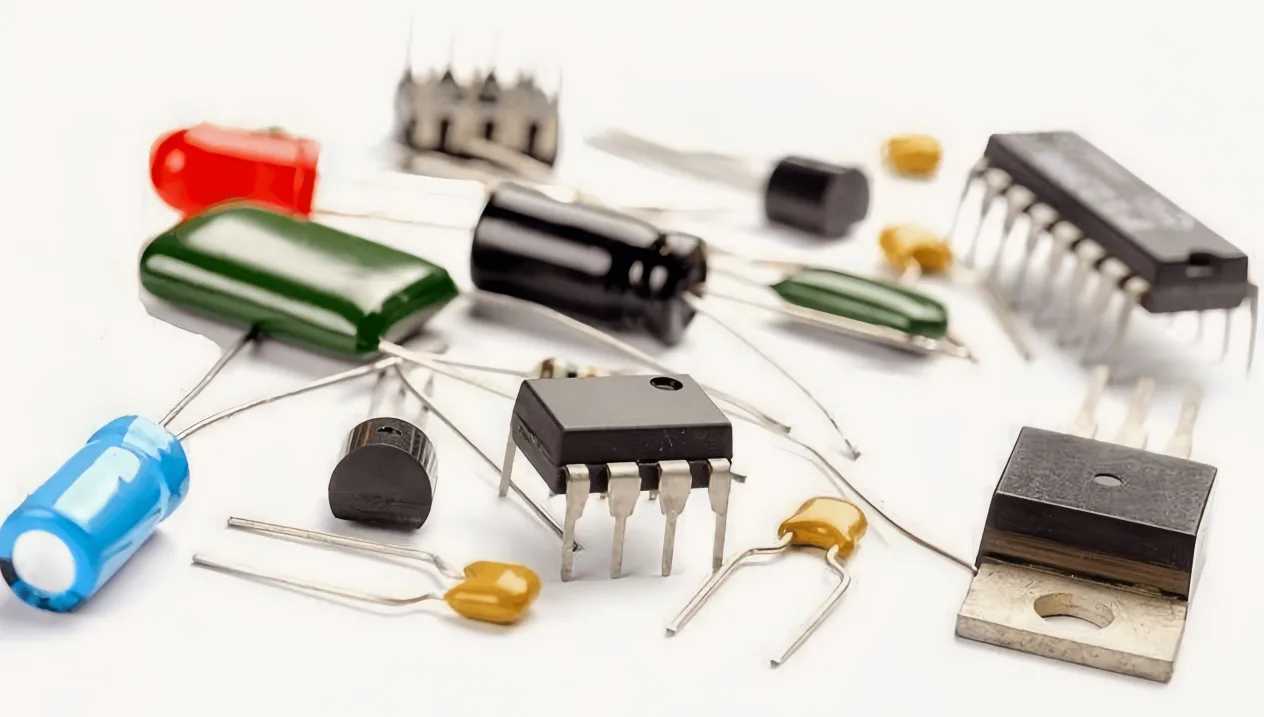
3.4 Electronic Components
Relays are electromechanical switches in electronic devices. They are composed of an electromagnet, contact points, and a mechanical lever. The relay uses a signal of lower power to control an electronic power circuit. The control and load circuits are isolated via relays. Home appliances, motor control, and industrial automation all make extensive use of relays.
An electrical or electronic circuit can be created or interrupted using switches, which are electromechanical devices. Switches can be operated manually or mechanically. Switches can be found in air conditioners, lighting systems, refrigerators, and electronic devices.
Electrical energy is transformed into mechanical energy by motors, which are electromechanical devices. Motors come in many different types, including DC, AC, servos, and induction motors. Applications for these motors are numerous and include robotics, electric and hybrid automobiles, industrial systems, and more.
4. What are electronic circuits
The path that electrical current takes between various electronic parts, including transistors, resistors, and capacitors, is called a circuit. Electronic circuits form the basis of all electronic systems and devices. Applications for electronic circuits are numerous and include power systems, industrial systems, and cellphones .
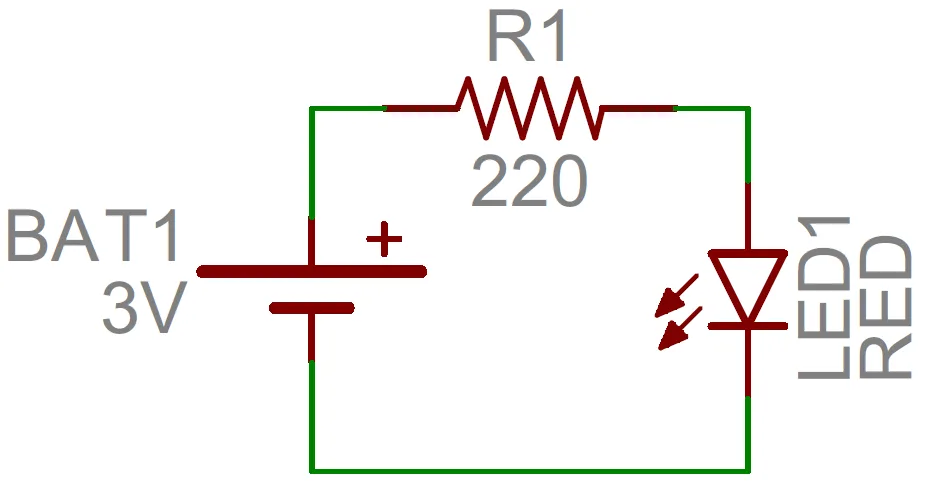
5. Types of Electronic Circuits
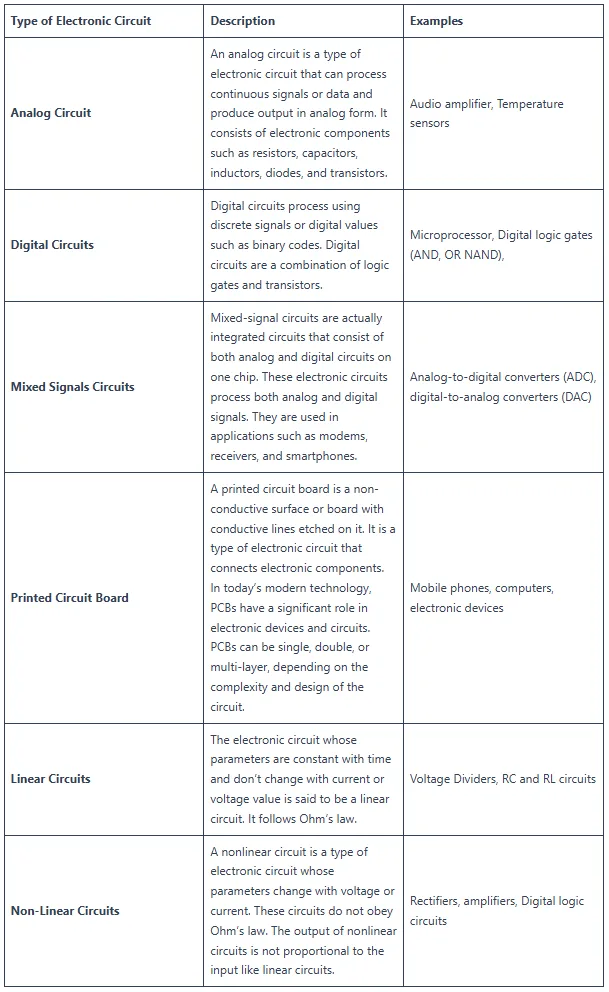
6. How to Design Electronic Circuits
We will break down the process of designing an electronic circuit to give you a better understanding.
6.1 Outlining the idea
This is where you will get your circuit board’s architecture ready. You will create the circuit board’s architecture here.
Starting from scratch as a novice might be challenging. Therefore, it’s helpful to use a guided project with step-by-step directions. You can start working on your own projects once you have a solid grasp of the procedure.
6.2 Translate on a schematic
You’ll need to create a schematic once you have a circuit in mind. You can then get a clearer picture of the circuit and where you need to connect components to make it work.
6.3 Run a simulation
Machine learning (ML), which has many applications, is transforming many industries. One of them is electronic engineering. With ML, you can now use software tools to design and simulate circuits.
You can test circuit designs using ML simulation software before you physically build them. The ML simulation tools can reduce the cost of designing a circuit as they can identify any errors or improvements before you spend resources on creating the physical design.
6.4 Create a prototype
When you are confident that your circuit design is functional, you can create physical prototypes using a breadboard without solder to check if the simulation works in real time. Breadboards allow you to build temporary circuits for testing without having to permanently connect electronic components.
6.5 Final PCB design
A printed circuit board is used to make permanent circuits. After you have tested your circuit design with a prototype and are happy with it, you can create the PCB for your final circuit. The green boards that are located within the majority of electronic devices are likely familiar to you.
7. Test and Measurement Instruments for Electronic Devices
7.1 Oscilloscope
The oscilloscope visualizes electrical voltage signals in time. It displayed voltage signals graphically and visually over time. The oscilloscope is used to analyze waveforms, frequencies of signals, transient responses, and noises in electronic circuits. You can observe and study electrical systems using the waveform. It is mainly used in telecommunications, electronics, and other fields.
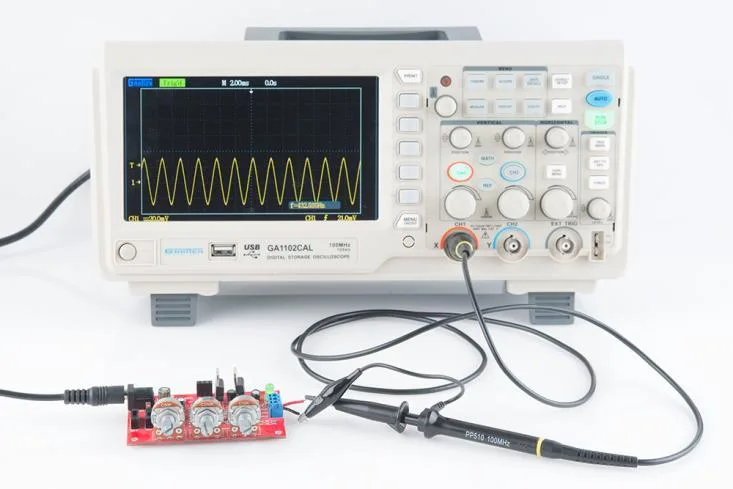
7.2 Multimeter
Multimeters are used for testing and measuring multiple electrical parameters in an electronic circuit. These consist of resistance, voltage, and current. In addition to measuring resistance in Ohms, it can monitor AC voltage and DC current. Multimeters can be used to check continuity in electronic devices or circuits. The following is a typical analog and digital meter:
8. Electronic Devices and Circuits
- Consumer electronics
- Industrial Automation
- Robotics & Intelligence
- Medical Applications
8.1 Consumer Electronics
Consumer devices are devices that are used for entertainment, information, communication, or other purposes. They are used for leisure activities. Consumer electronics are a key component of today’s technology, allowing us to connect the world through smartphones and laptops. Consumer electronics include smartphones, laptops, and smartwatches. They also include headphones, air conditioners, and microwave ovens.
8.2 Industrial automation
The use of electronic devices and engineering has a major impact on industries. Electronic device circuits regulate and keep an eye on industrial processes, including pressure, temperature, and flow rate. Circuits and electronic devices optimize energy consumption for industrial systems. This technology also allows for automation and robotics within industrial systems.
8.3 Robotics and artificial intelligence
Electronic circuits and gadgets form the foundation of robotics and artificial intelligence (AI). It is used to enable the perception and control of sensors like infrared or LiDAR. Electronic circuits are important in the field of artificial intelligence and robotics because they process the large amount of data required to train and deploy machine-learning algorithms.
8.4 Medical devices
Electronic devices and circuits are important in medical devices, just as they are in other fields. It made advancements in treatment, diagnosis, and health monitoring possible through gadgets like imaging equipment and monitoring systems.. Examples of electronic devices used in medicine include X-ray machines and MRI machines.
9. Summary
Electronic circuits and devices play an important role in facilitating our daily lives, shaping modern technology, and promoting advancement in many fields. These devices are designed using electronic components, including semiconductors, passive components, and active components. These components function in control systems and process information. Electronic circuits are the foundation of new technology and efficient systems. Electronic components are the foundation of everything from industrial automation and power systems to medical imaging and cellphones.. The design of printed circuit boards and the troubleshooting techniques are essential for creating an efficient electronic device.
If you’ve never had a stop solution for your PCB needs before, you may be surprised that you can save so much time and energy by choosing pcbandassembly. Because we’re a one-stop company for printed circuit board-related products and services.You’ll save time and money by not having to search for other companies to finish the job.
Latest Blog
Contact us
Free Quote


